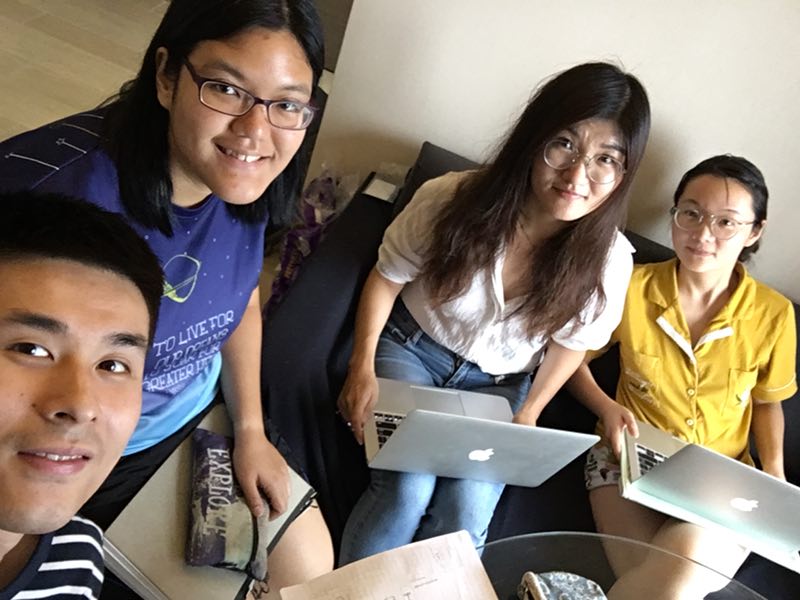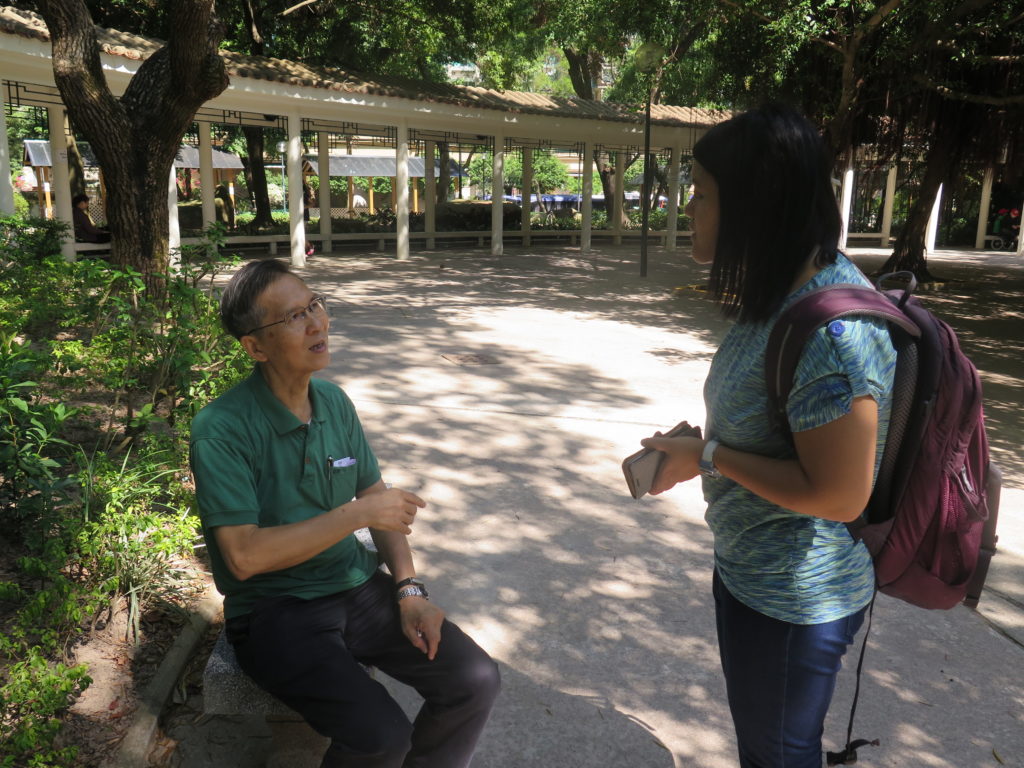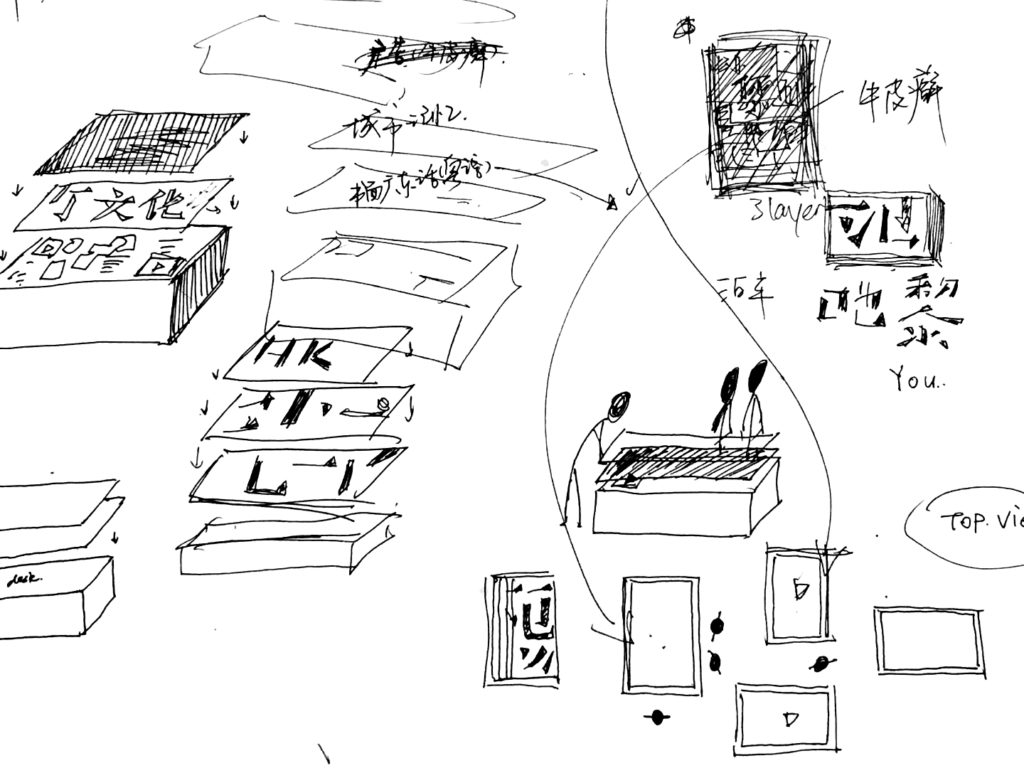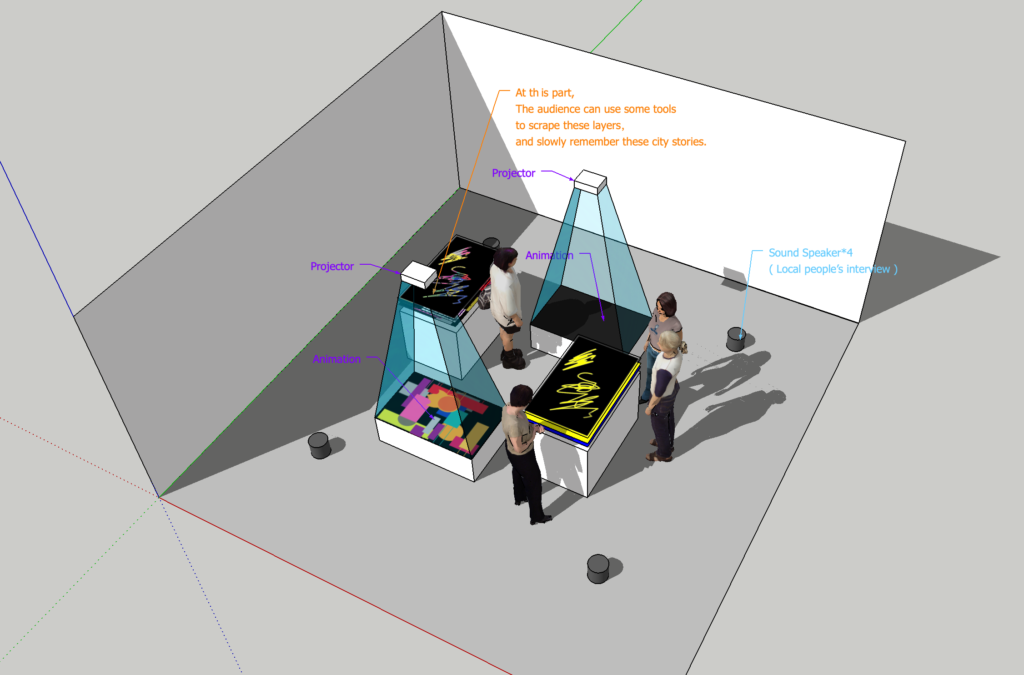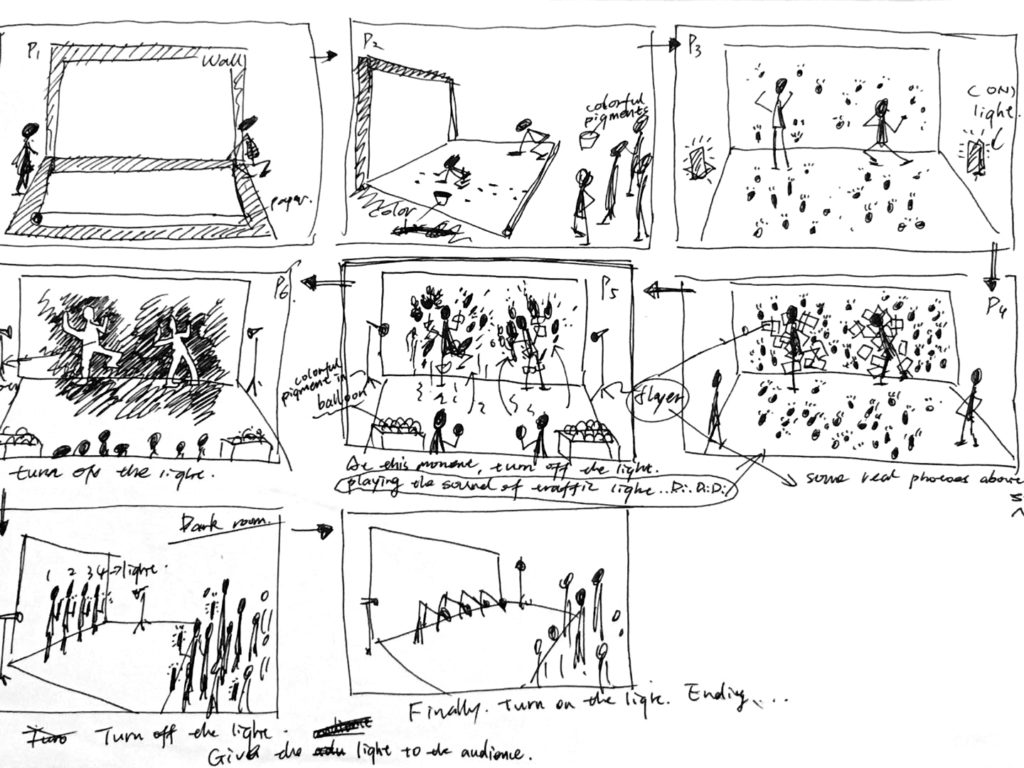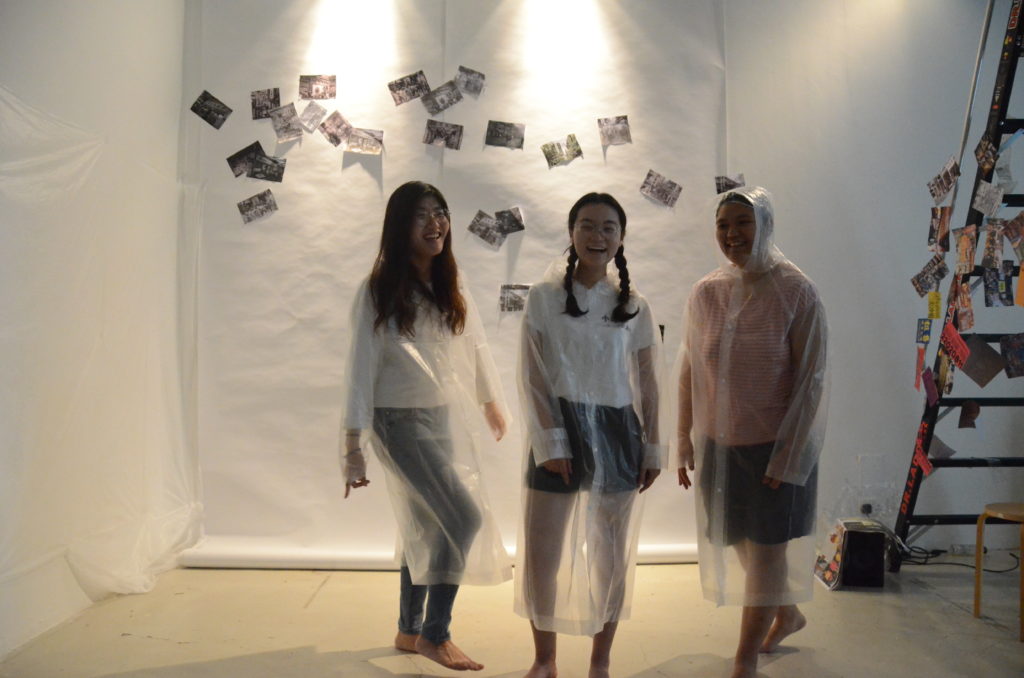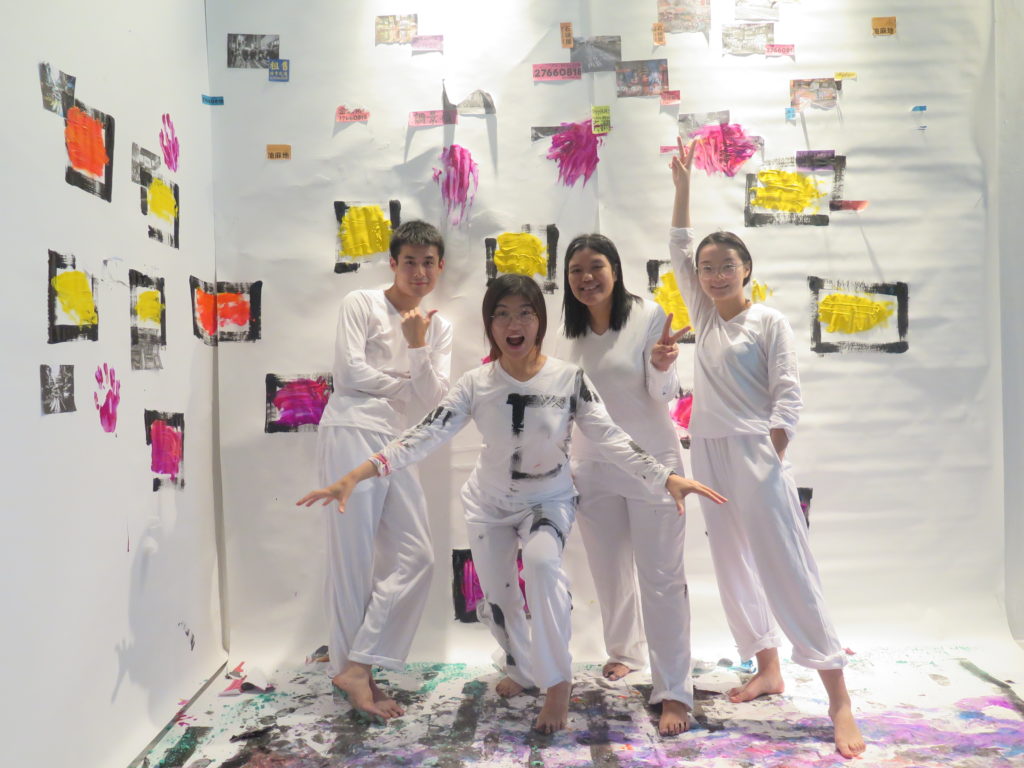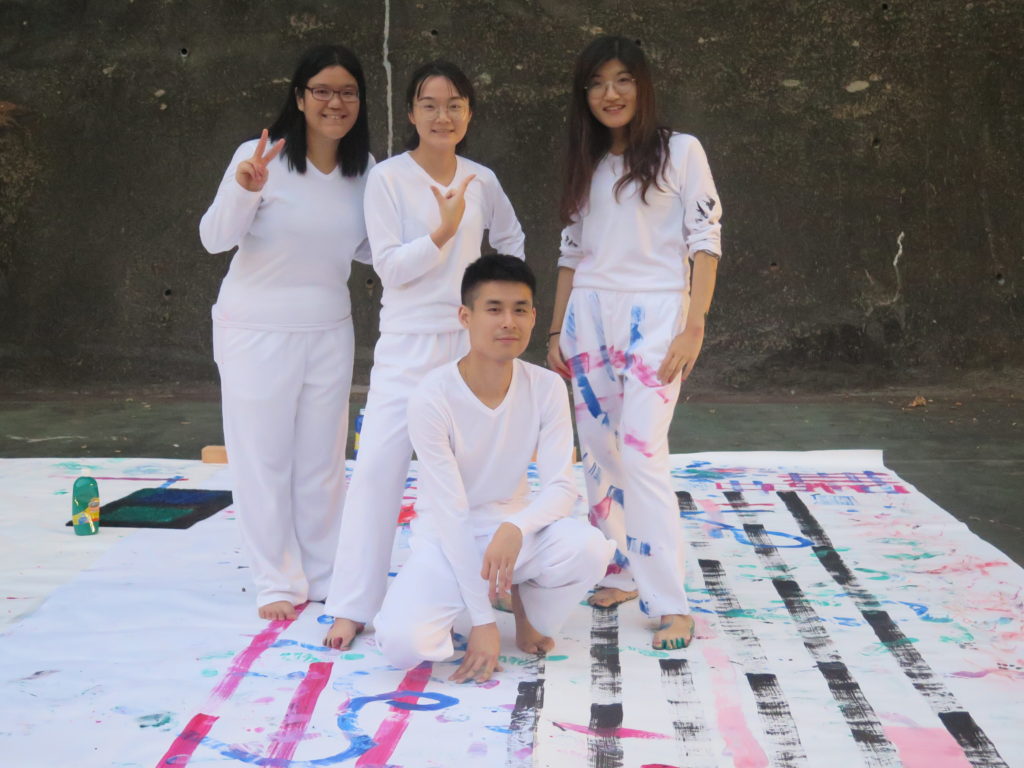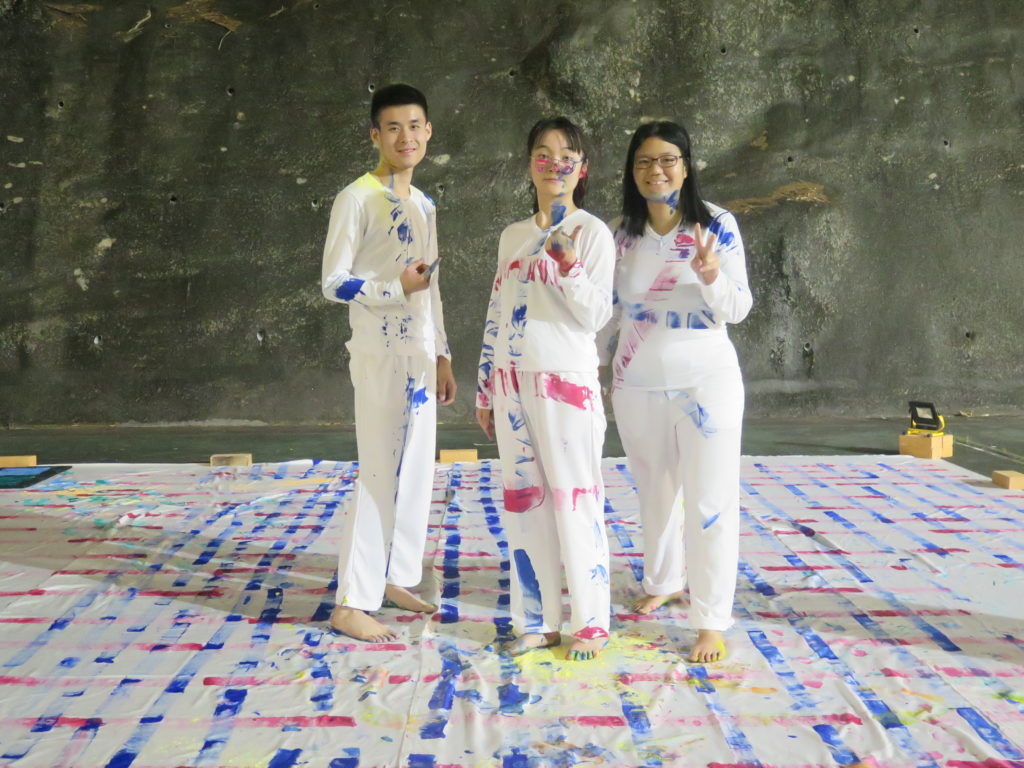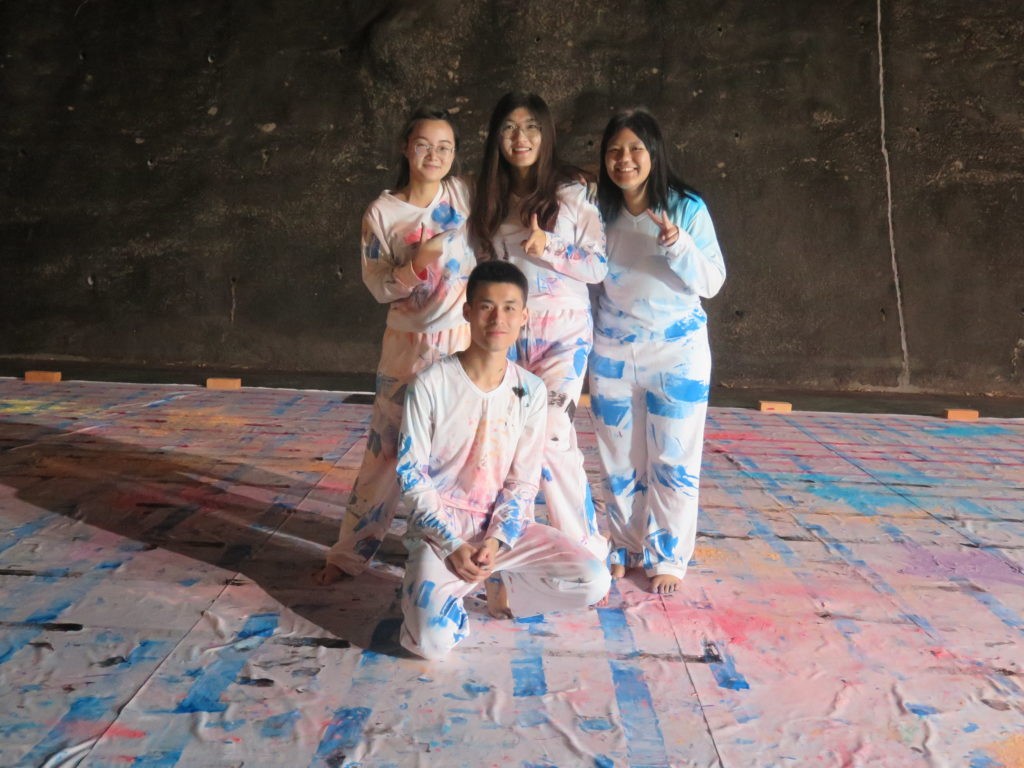A durational performance by Yuanyang Bao (Visual Communication Design, China Academy of Art, Hangzhou), Peitao Chen (Visual Communication Design, China Academy of Art, Hangzhou), Wen Qing Kwek (Fine Arts, LASALLE College of the Arts, Singapore) and Xiaoli Liu (Intermedia Art, China Academy of Art, Hangzhou).
Intro
We came together as a group, as we were interested in investigating the theme of ‘Memory’ from various aspects. During the formation of our group, we discussed themes such as our childhood memories, our emotional attachment to places, nostalgia for the past and collective memories etc. With the idea of memory as a starting point, we began planning towards an installation piece and eventually focussed on collective memories, in particular, the memories created in cities. However, 1.5 weeks left to the exhibition vernissage, our group made the collective decision of transforming our installation into a performance instead.
Concept
The city is a beehive of activity, a melting pot of people and cultures. New
encounters take place daily, and narratives are written and rewritten. These
eventually become the shared collective memories of the public; a familiar
association or occurrence people relate to over time. However, as a city progresses and undergoes development or redevelopment, the attachment and the collective
memories we once held dear eventually also disappear. What remains is a
nostalgia and longing for the past combined with reminiscences of the good
old days. Someday in the future, when reflecting on the past, we will wonder;
what exactly does this city leave us with?
Process
Beginning with the theme of ‘Memory’, we approached the topic by sharing our experiences that we had throughout the TC programme thus far, ranging from our time in Zurich, Shanghai, Hangzhou and that of Hong Kong. We discussed our impressions of these countries, what differed from country to country and what we enjoyed. In particular, we talked about the contrasting landscapes between Zurich and Hong Kong; how the environment in Zurich was filled with green spaces and was especially relaxing, compared to Hong Kong’s cluttered and claustrophobic atmosphere. That led to us sharing about what we noticed in Hong Kong, what we felt was especially unique to the Hong Kong landscape and had become familiar/ recognisable ‘trademarks’ to us.
We discussed how Hong Kong’s city skyline consisted of so many skyscrapers and despite that, how the skyline could not be seen at times as it was being littered with advertisement billboards. We also discussed the effectiveness of media speech, how the prospering businesses had led to the success of the neon light signboard industry in Hong Kong. Hong Kong being a place of such hustle and bustle, we wondered if we would be able to get the people on the streets to interact and participate with us.
With that, we decided to narrow down the topic by concentrating on our memories of Hong Kong. Our initial research led us to how industrialization signaled the proliferation of the neon light signboard industry and the boom in consumerism, which reflected the commercial prospering of businesses and the increasingly consumerist lifestyle. Since the 1950s, these neon signages played an important role in Hong Kong’s cityscape; strong visual symbols/ pictorial language/ indications of Hong Kong cities, evoking nostalgia and a sense of belonging in the community.
We also realized during our research that Hong Kongers would say, “Let’s wait/ meet at that so and so signboard.” From purely serving a visual purpose, the neon light signboard had grew so iconic that each signboard had its distinct design, distinct enough to function as landmarks of meeting points for groups of people. It was a visual phenomenon which people resonated with and gradually became emotionally attached to; an icon of Hong Kong’s urban landscape and identity.
With every business wanting to promote itself, neon light signboards were manufactured bigger and came in all shapes and sizes, carrying a range of pictures and messages. Businesses would come up with neon signages that were larger than their competitors’. This eventually led to the flooding of billboards, caused by the over-promotion of various businesses. Because of this, the Hong Kong government had to step in to tackle the neon light signboards as it had become a safety issue. The crackdown of outdoor structures thus pushed neon lights out of the streets, coupled with the closure of old businesses.
From there, we came up with a metaphor; that the dismantling of neon signboards = erasing of cultural memory. By demolishing neon light signboards, all the cultures and memories associated with them would be lost. Indeed, up to 90 per cent of the main neon signages of the city have disappeared during the last 20 years, a loss to Hong Kong’s visual culture and urban landscape.
The vanishing neon signboards and the loss of memories thus presents itself as a potential crisis with regard to the future of collective city memories. Who decides what stays and what goes? From one generation to the next, what will continue to exist? Who decides what remains?
From there, our first idea emerged. With constant development, cities change. The unique features of a place also disappear. As much as people’s lives improve in the process, the tangible aspects of a place are lost. With that, the more intangible aspects of human relationships gradually fade away, without a standing monument or building that serves as an icon of remembrance. These are the unspoken aspects that are not immediately visible. When the attachment is gone, the unseen aspects behind these rapid developments lead to a certain sense of amnesia in people, where places fail to evoke collective memories in their minds.
Key points discussed:
- The city and dissipation of people’s emotions (Disappearance of urban visual symbols = Disappearance of things associated with that place)
- Memory = Continuity of space + Continuity of time = Desired outcome we wish for
Therefore, the changing landscapes = replacement of memory = emotional loss. We wanted to emphasize this sense of loss in our work and the link between people and cities, the interconnections between them and the impact that these have on people when the link between them is destroyed. Our aim was thus to create a certain awareness, a sense of loss and a reverie that would linger in people’s minds. We wanted the destruction to be felt and the imagery of the loss to remain.
As such, we thought of having well-known places of Hong Kong on boxes, constructed in the form of a city, and we would create an installation with remnants of the destruction during a performance. We also thought of inviting the audience to join us in the destruction, with the loss as the focal point.
However, during one of the feedback sessions, we were questioned about the purpose behind focussing on the loss. Could we change things in the space, hide things, re-assemble things and not only destroy things? How could people intervene in the space and modify it? Or perhaps we could breathe new life into the materials by using old items and repurposing them or making them new again? There could be more interations of the destruction, like how could our research be more purposeful? How could we play a part in shaping the future?
Other than the place, what sort of personal connections did people have of them? We were interested in finding out more and decided to conduct interviews with the locals. Our next plan of action was to interview people on the streets about how Hong Kong had changed over the years. We would also research on the aspects of Hong Kong that are close to locals’ hearts.
Hong Kong being a place whereby the locals were mostly absorbed in their own lives, we faced difficulties in finding interview subjects. Upon further discussion, we decided to head to playgrounds, parks and schools. These places were selected as we felt that people had more free time to spare there and therefore, more time to answer the questions we were intending to pose to them.
We split into 2 groups to conduct our interviews at different places – Wen Qing with Xiaoli and Peitao with Yuanyang. The grouping was such as Wen Qing and Peitao could speak some Cantonese and would be able to converse with the locals in Cantonese if necessary.
Examples of interview questions:
-
What are some of the collective memories that you share with others? For example, the neon lights in Hong Kong which have slowly disappeared, the food etc.? In your daily life, are there such memories that have impacted you and others?
-
What caused these memories to slowly disappear?
-
Which places have vanished or are slowly vanishing that are of importance to you and Hong Kongers? Why?
-
What are some examples of the memories that are close to your heart?
Many perennial issues were constantly brought up such as the lack of space in Hong Kong, the high cost of housing prices, the change in the way people would communicate with one another (face-to-face communication is gradually replaced by technological tools), forgotten festivals or activities, the closure of local restaurants, vanishing neon lights as well as the disappearing noise and city sounds etc.
We managed to interview a total of 7 members of the public for an average of approximately 15-20mins each. We decided to share some of these stories in a storytelling fashion, concentrating on 4 stories – the transformation of mahjong, the history behind the iconic Whampoa ship at the Wonderful Worlds of Whampoa, the disappearing neon lights and the flyer wall advertisements that used to be commonplace in Hong Kong.
These stories would be told in the form of 2 video animations and 2 table-top installations made out of layers acrylic sheet, with a minimum of 6 layers used to tell each story. The audience would need to scratch through each sheet in order to uncover the story. If the audience were to scratch everything, only a blank acrylic sheet would be left.
To read more about this group’s work process, please click here to read an interview with them for “A day with…”.
Result/State of Play
During one of our group project meetings after a particular consultation session, we collectively decided to switch to performance as an alternative way for us to resolve and present our ideas and concepts in a different form. Based on the advice given, we felt that if we were to present the stories in the way suggested, the work would take on a more historical approach which differed from our original intent of wanting to leave viewers with a sort of emotion and experience after visiting our installation. At 1+ am, we were still in the midst of our project discussion. The decision was made and Wen Qing was tasked to write the script.
The following day, we presented the script and proposed a performance piece to our lecturers. We were asked to reconsider our decision. It was also made clear to us that should our performance not be up to the mark, we would not be allowed to perform.
With only 1.5 weeks left to the exhibition opening, we thought long and hard about it but still felt that a performance would better convey our ideas. We decided that we would roughly maintain a similar concept and would integrate certain elements of our installation into our performance. Hence, the background work that we had done previously would not go to waste.
Having mostly produced 2-D works, our team also wanted to use this opportunity to take risks, experiment, and to try something new; to apply the knowledge that we had learnt the past 3 months to realise a project that would integrate new forms and disciplines into our practice, a terrain we would not have had enough courage to venture into on our own and definitely more difficult to achieve upon completion of the Transcultural Collaboration programme.
It was a tough decision made but from that moment on, there was no turning back. We shared our decision with the lecturers and they accepted our challenge. With the initial script as a starting point, our group worked out a performance, presenting a first tryout the next day.
Our original approach was more theatrical, employing light and sound. Performance being a new medium to the four of us, along the way, we were gradually noticing the differences between theatre and performance. Theatre focussed more on the dramatic effects and the storyline however with performance, it was less representational but more metaphorical.
Along every step of the way, small steps were taken to achieve our goal. After every performance, we reflected on our moves and pondered upon the feedback given by our lecturers. With every rehearsal, we refined our performance piece, focussing even on the minute details. We learnt how to be precise with our actions, with every action created with an intent.
After countless rehearsals, we could finally perform in front of the public! The end result was a 2.5 hours durational performance at the basketball court. In fact, it turned out to be way longer than our planned performance of 1.5 hours! Its quiet location and how it was nestled away from the other exhibits made it an appropriate venue. Starting while there was still daylight and continuing till night, gave it a closer resemblance of how things changed in the city. The sounds that came from our surrounding environment also seemed to echo the hustle and bustle of city life. Every mark made signified a mark in time, of memories laid and overlaid, the changing circumstances and traces left, represented by the blending and mixture of colours from the strokes and footprints.
Throughout the 2.5 hours, the blank piece we originally started with would never once look the same. It was in constant movement, evocative of how memories in a city are being constructed. Whenever the audience dropped by to watch the performance, it was evident that the piece looked different. More and more layers were added each time, forcing the colours to overlap, merge and smudge, just like how memories are written and re-written.
We also kept switching roles during our entire performance; once our job was done, we would be replaced and another person would take over and vice-versa. A key concept in our work was of the layering, and seeing this narrative played out over time. At first, we were overly concerned with the visual outcome, whether it would look ‘nice’ but later realized that the essence of our idea was what was more compelling. Less is more.
Our group struggled a lot but by concentrating on the learning process, we were able to achieve something beyond ourselves. The irony was that with zero performance background, we were a group of four who adamantly rejected performance outright at the very beginning. Ultimately though, it was the journey, the learning process and accumulated experience gained, that mattered the most at the very end. We have come full circle.


